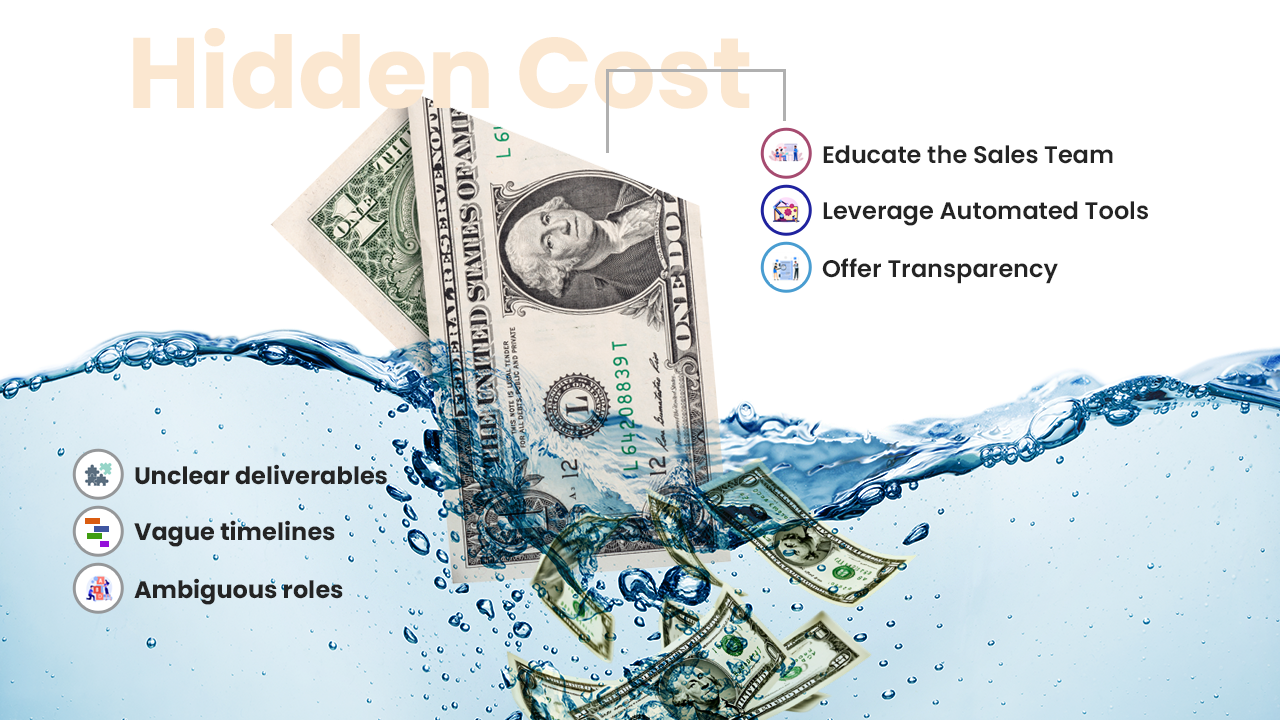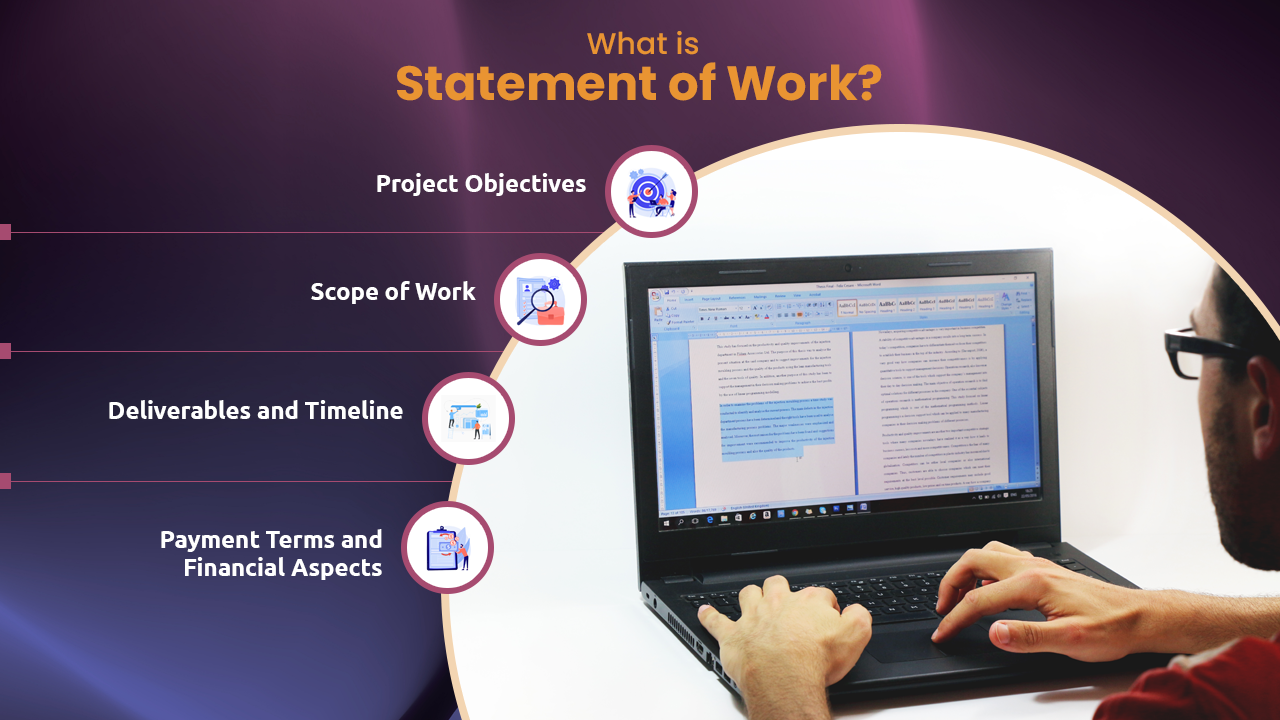Bold Keyword: Statement of Work (SOW) has become a cornerstone document for professional service sales teams, freelancers, and large enterprises looking to define project details and terms. Whether you’re a business owner seeking clarity on project goals or a project manager aiming for better alignment, understanding the SOW is critical. To see a step-by-step process of drafting your own SOW, check out our guide on writing a Statement of Work.
Why an SOW Matters in 2025
The SOW has evolved beyond a basic project outline. By 2025, organizations are increasingly using it not just for legal clarity, but also to shape the entire course of a project. This shift is especially true in an era where remote collaboration and AI-driven decisions are more common. An SOW lays out the who, what, where, when, and how of a project, mitigating confusion and potential disputes.
A 2023 study by the International Association for Contract and Commercial Management (IACCM) found that 64% of contract disputes stem from ambiguous language in an SOW. In other words, the more specific the document, the less likely disagreements will arise later. This evidence underscores how a well-structured SOW can contribute to a more accurate and predictable project outcome.
Shifting Industry Demands
• Remote Work: As remote and hybrid models remain prevalent, SOWs must detail communication preferences, file-sharing methods, and any time zone coordination.
• AI Integration: Many businesses integrate AI-based project estimation or analytics tools, which in turn can alter timelines or costs mid-project. The SOW should address how these updates will be handled.
• Data Protection: Heightened sensitivity around data means SOWs are increasingly including non-disclosure clauses and cybersecurity protocols.
Given these trends, a robust SOW can help maintain a stable, transparent working relationship, regardless of physical location or software tools involved.
Essential Components of a Statement of Work
Project Objectives
This section spells out the overarching goals. A good approach is to list the specific motivations behind the project, such as streamlining internal processes or generating new revenue streams. For instance, if a software firm wants to integrate an AI module, the objective could be “to develop and deploy a secure AI feature that reduces manual data entry by 50%.”
When objectives are this clear, your team—and your client—know exactly what success looks like.
Scope of Work
A scope of work describes precisely what will (and will not) be done. This clarity helps address scope creep before it derails your budget. According to a 2024 survey by the Project Management Institute (PMI), 60% of scope-related conflicts could have been avoided if parties had outlined responsibilities more carefully at the start.
Common elements include:
• Specific tasks assigned to each team or individual
• Methods to be used (e.g., agile sprints, phased implementations)
• Any exclusions or tasks that are explicitly out of scope
Deliverables and Timeline
Every SOW should define tangible outputs. Deliverables could be software modules, design assets, or training documents—whatever the client expects to receive. Alongside each deliverable, the timeline spells out milestones and key due dates.
A well-structured timeline often includes:
• Start and End Dates: The project’s official kickoff and completion
• Milestones: Intermediate goals, such as finalizing a design mockup or completing a beta test
• Dependencies: Any tasks that require completion before subsequent tasks can begin
Payment Terms and Financial Aspects
Some companies tie payments to milestones, while others use time-and-materials billing. Whichever route you choose, payment schedules must be unambiguous. For instance, you may include:
• Fixed Fee: A set project cost paid in installments
• Hourly Rate: Payment based on time logged, typically with a not-to-exceed clause
• Performance Incentives: Bonus payments for meeting or beating specific goals
Make sure that both parties agree on an invoicing schedule and any conditions that might change billing, such as additional review cycles or requested revisions.
Common Pitfalls and How to Avoid Them
Despite the best intentions, SOWs can fall short. Here are frequent mistakes:
- Ambiguous Language: Vague terms like “optimize” or “implement best practices” often lead to misinterpretations.
- Overly Detailed Requirements: Providing hyper-specific instructions can limit flexibility if the project evolves.
- Missing Risk Assessments: Ignoring potential obstacles—technical or otherwise—can catch teams off-guard.
A real-world example is the 2022 TechCorp vs. MegaCorp dispute, where scope creep turned a $2 million contract into a $12 million lawsuit. The SOW lacked clear acceptance criteria, causing ongoing disagreements about what was “complete.” This debacle highlights the importance of making success metrics explicit right from the outset.
Industry Trends and Emerging Tech for SOW
AI-Assisted Drafting
AI-based platforms can analyze historical SOWs and suggest sections or phrases, cutting drafting time significantly. Studies show that AI-assisted SOW creation reduces document errors by up to 35%, helping teams achieve more reliable timelines early on.
Blockchain for Verification
As more industries adopt blockchain for tracking and security, SOWs can be verified through decentralized ledgers. This approach adds an extra layer of trust and transparency, particularly relevant for international projects.
Agile Rolling SOWs
Agile teams might use a “rolling” SOW, updating it each sprint if new tasks appear. This approach suits fast-changing tech environments where requirements can shift after feedback cycles.
Stats and Figures
• Staffing Industry Analysts noted a 21% increase in managing SOW-based projects over a 10-year span, emphasizing the shift toward outcome-based solutions.
• 82% of SOWs in IT projects now feature cybersecurity clauses (2023 data).
• 45% of large organizations plan to integrate AI into their project oversight by 2025, potentially requiring SOW clauses to outline usage boundaries.
Statistics like these confirm that SOWs are gaining momentum as an essential contract element across different sectors. Specialized clauses—like cybersecurity requirements—are no longer optional, especially for complex initiatives.
How to Write an Effective SOW
While there’s no one-size-fits-all template, successful SOWs often share these characteristics:
- Clarity: Use concise, direct language that leaves little room for guesswork.
- SMART Objectives: Ensure objectives are Specific, Measurable, Achievable, Relevant, and Time-bound.
- Defined Milestones: Include checkpoints where all parties can review progress.
- Robust Acceptance Criteria: State any conditions a deliverable must meet to be considered finished.
- Risk Management: For instance, if certain tasks depend on third-party software, mention what happens if that software is delayed.
If your business aims to improve SOW processes further, consider examining different structures in our Types of SOW and How to Automate Them resource. Whether you deal with fixed-price or time-and-materials contracts, an optimized approach can slash drafting time and lower confusion about roles.
SOW Impact on Professional Service Sales
Professional service sales teams are uniquely positioned to benefit from well-detailed SOWs. Sales reps frequently pitch complex services—each requiring a thorough breakdown of tasks, roles, and costs. An SOW:
• Establishes Credibility: Clients see you’ve done the homework on scope, timeline, and potential risks.
• Minimizes Surprises: Minimizes last-minute additions or unwanted changes in scope, helping sales teams accurately quote.
• Builds Stronger Partnerships: A transparent contract often fosters mutual trust, promoting ongoing work and referrals.
Zoma.ai supports these teams by delivering an AI-driven platform that references prior scoping data, tracks standard deliverables, and reduces guesswork. By unifying your historical knowledge, you can refine your SOWs for more accurate quotes and schedule estimates.
Key Takeaway
A strong Statement of Work (SOW) is the linchpin for successful projects. It aligns stakeholders, clarifies deliverables, and lays out a clear roadmap from day one. Shifts in remote collaboration, AI integration, and data security are pushing organizations to refine their SOW tactics. Whether you’re drafting your first SOW or revisiting an existing template, a clear, detail-oriented approach pays dividends.
If you want extra tips on cutting scope expansions before they harm your budget, have a look at Ways to Avoid Scope Creep in Your Projects. By preventing misaligned expectations, you keep client satisfaction high and protect your bottom line.
References
- International Association for Contract and Commercial Management (IACCM). (2023). “Global Contract Practices and Trends.” Available at: https://www.iaccm.com/contract-trends.
- Staffing Industry Analysts. (2022). “Contingent Workforce Strategies Survey.” Available at: https://www2.staffingindustryanalysts.com/content.
- Project Management Institute (PMI). (2024). “Survey on Scope of Work Clarity.” Available at: https://www.pmi.org/research/scope-work.
Shachar Kaufman
Category
Related Posts

How to Streamline Pre-Sales Workflows for Better Scoping and Quoting
March 2025 | 6 min read

Why Service Sales Teams Struggle With Scoping and How Automation Can Help
March 2025 | 8 min read

5 Ways to Simplify Service Sales Scoping With Automation
March 2025 | 7 min read

How to Automate Complex Service Scoping and Quoting for Professional Sales Teams
March 2025 | 7 min read

The Hidden Cost of Inaccurate SOWs in Service Sales
March 2025 | 7 min read




